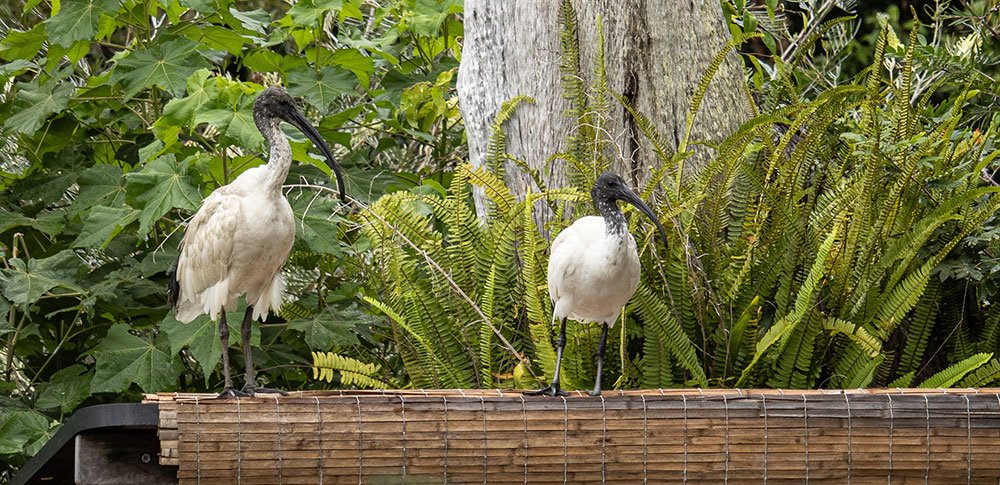Learning to Love Ibis
By Angela Hoskins
Flock of Australian white ibis (Dreamstime Stock Photo | Credit: Robert Downer)
It was years ago in urban Sydney that I first noticed an ibis as it plodded through a lunchtime crowd. It intrigued me. The bird was pretty focused with one eye on a human while its other eye scanned the area for something to pick. They are canny. They amble about their business aiming not to mess with humans but for the ibis, the mess that humans make can value-add.
A lot of people don’t like the Australian white ibis and, from my observation, the feeling is mutual. But ibis gravitate to areas where humans regularly group — parks, picnic areas, and urban outdoor eating places. Why? Because humans leave rubbish around that contains food scraps, easy pickings for birds to rummage through, especially if it has a long, probing beak like the ibis has.
Ranger Stacey Thomson from Indigiscapes (Redland City Council) has expressed concern about feeding birds with inappropriate food
Ibis on the island
Coochiemudlo Island’s visitor numbers have increased significantly, especially during holiday times — and since the introduction of 50-cent fares to the island. At busy times, rubbish bins on the island’s foreshore and beach picnic areas often overflow with food scraps and other waste before scheduled council pickups. The mess presents an easy food source for animals and birds so consequently, from time to time, ibis numbers on the island increase, too.
Australian white ibis are native wading birds. For them, flying to and from the mainland is a piece of cake. A number of them permantly live here.
Ranger Stacey Thomson from Indigiscapes (Redland City Council) confirms ibis are part of the ecosystem and are critical to natural pest management, countering an urban myth that ibis are an introduced or feral species. She also reports that, amazingly, they are one of the few native species that have adapted to eat cane toads.
They also eat bush stone-curlew chicks. When a long-time island resident told me that, I took a dislike to ibis on the island. Baby curlews are vulnerable enough because they have many predators on the island including snakes, kookaburras, butcherbirds, and cats. No wonder bush stone-curlews are so anxious.
When an ecosystem is balanced, including native-specie numbers within a given area, the environment is at its best. Human behaviour can upset the balance if it’s not managed with an eye on environmental impact. Potentially, an increase of ibis on the island during curlew breeding season could upset the balance.
Over time, many of us flip-flop over what we think and believe as we observe, converse, and learn about the natural world. One of my flip-flops is that I now like the ibis — although, I do shoo them away when I know there are curlew babies nearby. If my intervention sounds like a contradiction to my to understanding of managing human behaviour the ecosystem works … maybe it is. Or maybe human intervention playing a role protecting curlew chicks, where possible, is a good thing: If predator numbers on the island increase because of human behaviour, shooing away ibis or other native specied — and preventing introduced species like cats freely roaming the environment — and other predators from vulnerable curlew chicks does, infact, help keep the balance and hopefully more chicks reach maturity.
Aside from being interesting characters in the neighbourhood, ibis do a great job aerating the soil as they probe for insects in our gardens, parks, and reserves. If you are a proud lawn owner, they will probably do you a favour if yours is riddled with lawn grubs — arguably better than using a poison to kill the grubs.
And when ibis fly off? Such beauty, elegance.
Australian white ibis in flight. Photo credit: Chris Walker
Related content:





